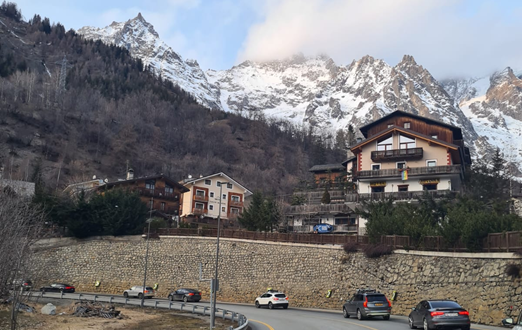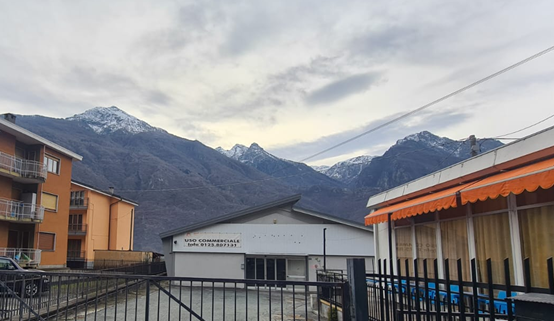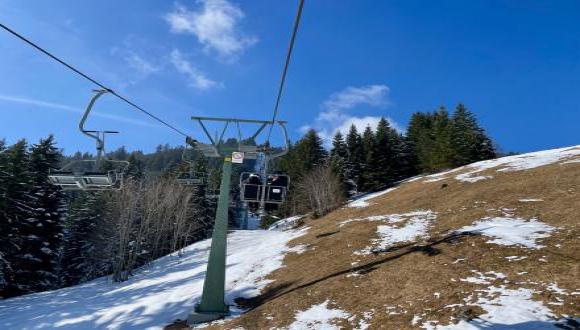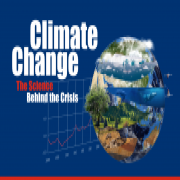Who Moved My Snow?
Winter Sports at Risk Due to Climate Change
The World Meteorological Organization (WMO) has partnered for the first time with the International Ski and Snowboard Federation (FIS) to announce a unique collaboration aimed at raising awareness of the harmful effects of rising temperatures on the tourism and winter sports industries.
Rising temperatures and climate change are already well-known issues. Around the world, we see images of destruction due to extreme events such as Hurricane Helene in the United States, which claimed at least 220 lives, and the record-breaking Hurricane Milton, along with widespread flooding in Europe that has inundated entire cities, and massive landslides in California and Brazil. However, the climate crisis has far-reaching implications beyond these sudden and extreme events. Rising temperatures also significantly affect our daily lives, including the things we eagerly anticipate—such as a snowy vacation in the mountains.
"Two years ago, my husband and our two older daughters went on a vacation in the mountains on the border between France and Italy," recounts Judi Lax, coordinator of the climate change program at Tel Aviv University. "What a surprise it was to discover that almost all of the slopes were closed and there was very little snow. They brought in snow from the peaks specially for the children." It turns out that over the years, the ski resort has been seeing more winters without snow, or with a significantly later start to the winter sports season.
According to research by Swiss scientists, glaciers in the Alps have already lost about 60% of their volume since 1850. Furthermore, since 1970, the number of days with snowfall has halved at elevations below 800 meters, where snow has been replaced by rain. If 50 years ago the elevation at which the temperature was zero degrees Celsius was around 600 meters above sea level, today, with warming winters, the minimum elevation has risen to about 850 meters.
As a result, a new collaboration between the WMO and FIS has been established to raise awareness of the not particularly bright—if not bleak—future for tourism and winter sports due to climate change.
Shrinking snow cover and melting glaciers impact ecosystems, communities and entire economies. While it is clear that there are huge implications of the climate crisis beyond its impact on leisure sports activities, the fact that climate change has a significant effect on this sector—which many residents and tourists love and look forward to—highlights the real threat it poses to the entire winter sports tourism industry. It's possible that emphasizing the impact on an activity that many cherish, and that one day might cease to exist, could help raise awareness of the urgency of climate change and could underscore the need for immediate action to mitigate the damage.
The collaboration will work to raise awareness using scientific knowledge and research, reviewing the impact of climate change on the industry so far, and promoting optimization tools for snow management in ski resort areas.
Various scenarios predict an average global temperature rise of 2° Celsius at best by the end of the century, and in a worst-case scenario, an increase of about 5.5° Celsius. Research conducted by scientists from France and Austria, focused on 2,234 ski resorts in Europe, found that under a 2°C temperature rise scenario, 53% of these ski resorts will be snowless during the ski season. If temperatures rise by 4°, 98% of ski resorts will be out of operation due to the lack of snow. The projections indicate that by 2060, the current freezing level of about 850 meters is expected to rise by an additional 400 to 650 meters if greenhouse gas emissions continue unabated—this means that snow bases will only appear at elevations of between 1,300 and 1,500 meters.

The road to the ski resort, January 2023. This area is usually completely covered in snow during January, shown almost snowless here. Credit: Judi Lax.
So if you’re someone who loves snow and enjoys skiing, know that winter sports activities are also at risk. There’s no doubt that climate change is already evident everywhere, and that rising temperatures have devastating implications for every aspect of our lives—even leisure activities. Will this awareness help bring about action to mitigate the damage and reduce greenhouse gas emissions? We can only hope so, as there’s no doubt we are skating on thin ice.

By the end of the century, most ski resorts are expected to be snowless. We are witnessing winters with mountains that are increasingly devoid of snow as temperatures rise. Photo credit: Judi Lax.
This article is based on a report from the World Meteorological Organization dated October 3, 2024.
If you haven’t joined TAU's Climate Initiative's mailing list to get the newsletter directly to your inbox, please join here.





